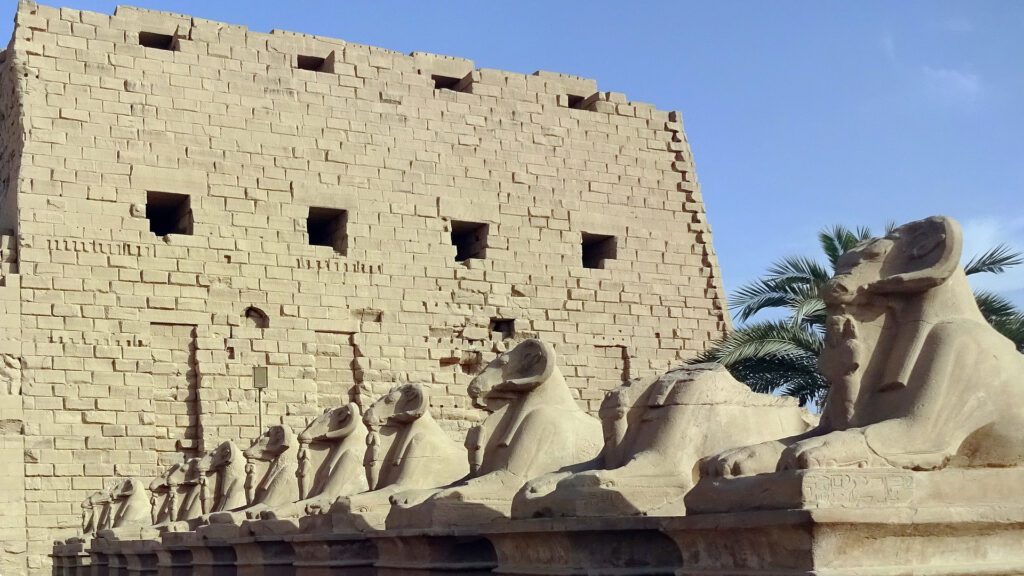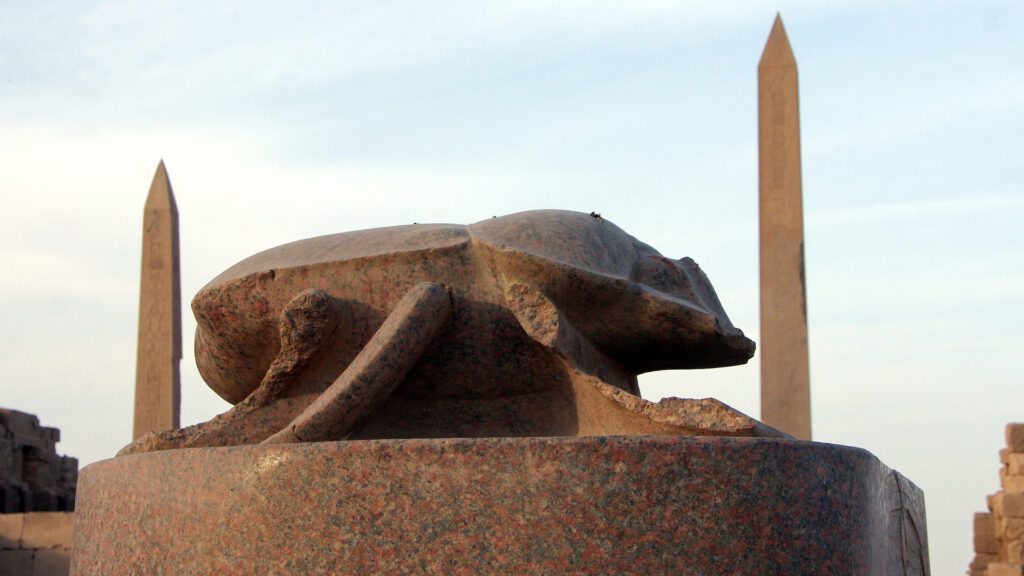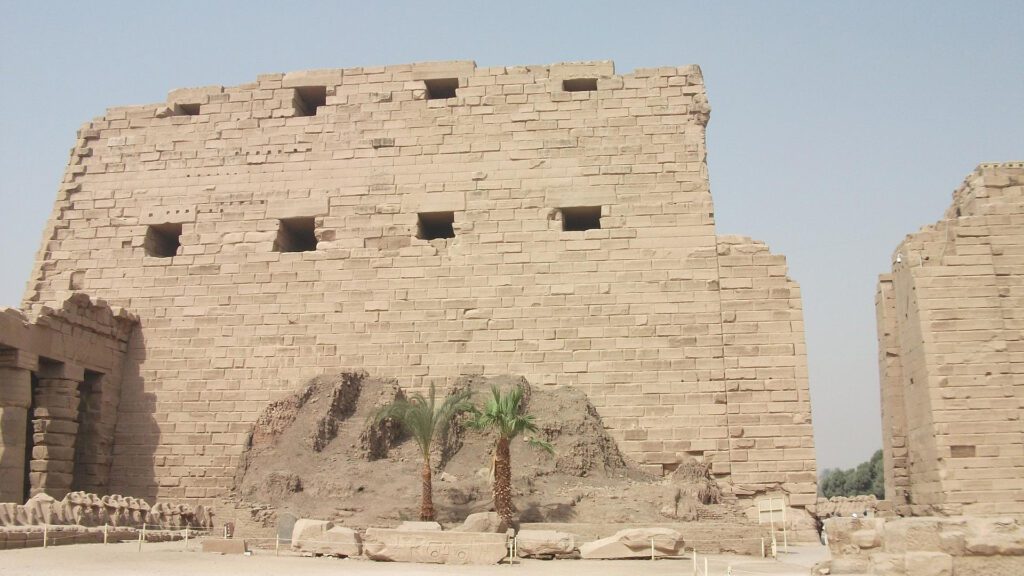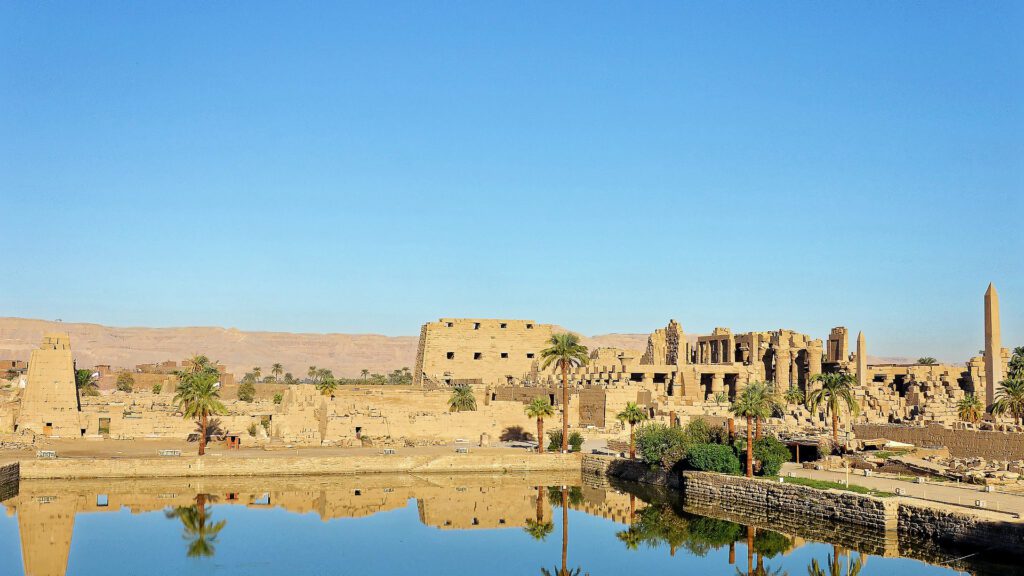
While the area encompassing the Pyramids of Giza and the Sphinx is by far the most popular touristic destination in Egypt, it isn’t necessarily the best. Of course, “the best” place to visit in Egypt is obviously a subjective matter, yet many of our guests reflect at the end of an Egypt tour that Karnak was the most surprising part of the entire trip. So, if we’re collecting a democratic poll of subjective preference, Karnak may just be the best touristic destination in Egypt.
There is far too much history to cover everything here, and there is no substitute for visiting in person, but we would like to introduce the Karnak Temple Complex today, giving you a summary of its rich history, stories, and architecture. If anything we say here inspires you to visit Egypt with Mr & Mrs Egypt, consider our custom Egypt tours, and please get in touch if you have any questions.
A Brief History of Karnak
The oldest parts of Karnak date as far back as 2000 BCE, with various parts built up and expanded by approximately 30 different pharaohs over the years. The first part of Karnak was originally built by Senusret I in the Middle Kingdom, which was around 2000–1700 BCE, with expansions and embellishments continuing until the Ptolemaic Kingdom (305–30 BCE). The area around Karnak was referred to as ‘Ipet-isut’, which means ‘the most selected of places’; it was an important religious spot in ancient Egypt as it was the epicentre of worship for the 18th Dynastic Theban Triad: Amun, his partner Mut, and their son Khonsu. That said, many other deities were worshipped within this epic temple complex — some were among the most ancient Egyptian gods and others were worshipped much later in Ancient Egyptian history.
In a sense, a brief history of Karnak is directly linked to the history of Thebes — the biggest and most significant city nearby. But Thebes didn’t start as a significant settlement straight away. As Karnak unified various religious practices and gods of worship into one place, more people chose to make a life in nearby Thebes. So, Karnak’s appeal to worshippers was likely to be one of the main reasons for the growth of Thebes into one of Ancient Egypt’s most important cities.
An Overview of the Karnak Temple Complex


The Karnak Temple complex is huge, with different sections for different deities. There are four main areas: the Precinct of Amun-Re, the Precinct of Mut, the Precinct of Montu, and the Temple of Amenhotep IV. The Precinct of Amun-Re (dedicated to the chief god, Amun-Re) is the largest in the temple complex, and it has many of the most impressive statues and buildings.
The Precinct of Mut is dedicated to the mother goddess. Most of this precinct was built by Thutmose II and Thutmose III — and Amenhotep III made his own contributions later. Mut was the Ancient Egyptian goddess of the sky; she had three main symbols — the lioness, the crown of Uraeus, and the vulture — that feature on many of the structures in this precinct.
The Precinct of Montu is dedicated to the Egyptian god Montu. Here, you’ll find the Temple of Montu, the Temple of Harpre, the Temple of Ma’at, a sacred lake, and the Gateway of Ptolemy III and IV.
The Temple of Amenhotep IV is the fourth precinct of Karnak. It is an ancient monument with structures dating back to the New Kingdom. It was first created in the first years of the reign of Akhenaten, the legendary pharaoh. Akhenaten initially used the name Amenhotep IV, so this is what his temple is named after. There is a reasonable amount of evidence to suggest that the edifices could have been constructed at the end of the reign of Amenhotep III, his father, and were later completed by Akhenaten.
The Great Temple of Amun


It’s a fantastic stroke of good luck that the temple of Karnak’s principal deity is in remarkably good condition. Built in 1630 BCE by Pharaoh Tuthmosis I, the Great Temple of Amun was then customised, extended, and adorned with various ornamentations by subsequent pharaohs, including many of the most famous names, including Ahmose I, Thutmose I, Akhenaten, Hatshepsut, and Tutankhamun.
While it is by no means in perfect condition, this 3651-year-old temple looks remarkably fresh when you consider its considerable age. Most visitors are drawn to the impressively large statues in the main room of the temple. As impressive as they are today, just imagine what they must have looked like when they were first made. Part of visiting any ancient Egyptian destination involves engaging our imaginations — picturing how it all must have looked in its prime.
The Sacred Lake of Karnak


While the temples, kiosks, and obelisks are all tremendously impressive, for many it is the sacred lake that makes the biggest impression. You can find this lake just to the south of the Temple of Ramses II. This pristine lake stands out in striking contrast against the otherwise dry limestone of the temple complex.
The various structures along the edge of Karnak’s Sacred Lake are all reflected in its glasslike surface, making for some of the best photographs you’ll ever take when travelling. Here, on the edge of the Sacred Lake, you will also find a large stone scarab beetle dedicated to the sun god Atum-Khepri. The highlight for many is the Obelisk of Queen Hapshetsut that stands, reflected in the pristine water.
That’s all we have time for today. Needless to say, we have merely scratched the surface of the wonders you can look forward to on your own visit to Karnak. Perhaps, in due course, we can find the time to come back to add more to this resource. As it stands, we hope we’ve inspired and enthused at least a few readers to come here themselves. As we said at the beginning, please feel free to contact us if you have any questions. As we create fully customised Egypt trips, we can pack your adventure with anything your heart desires!